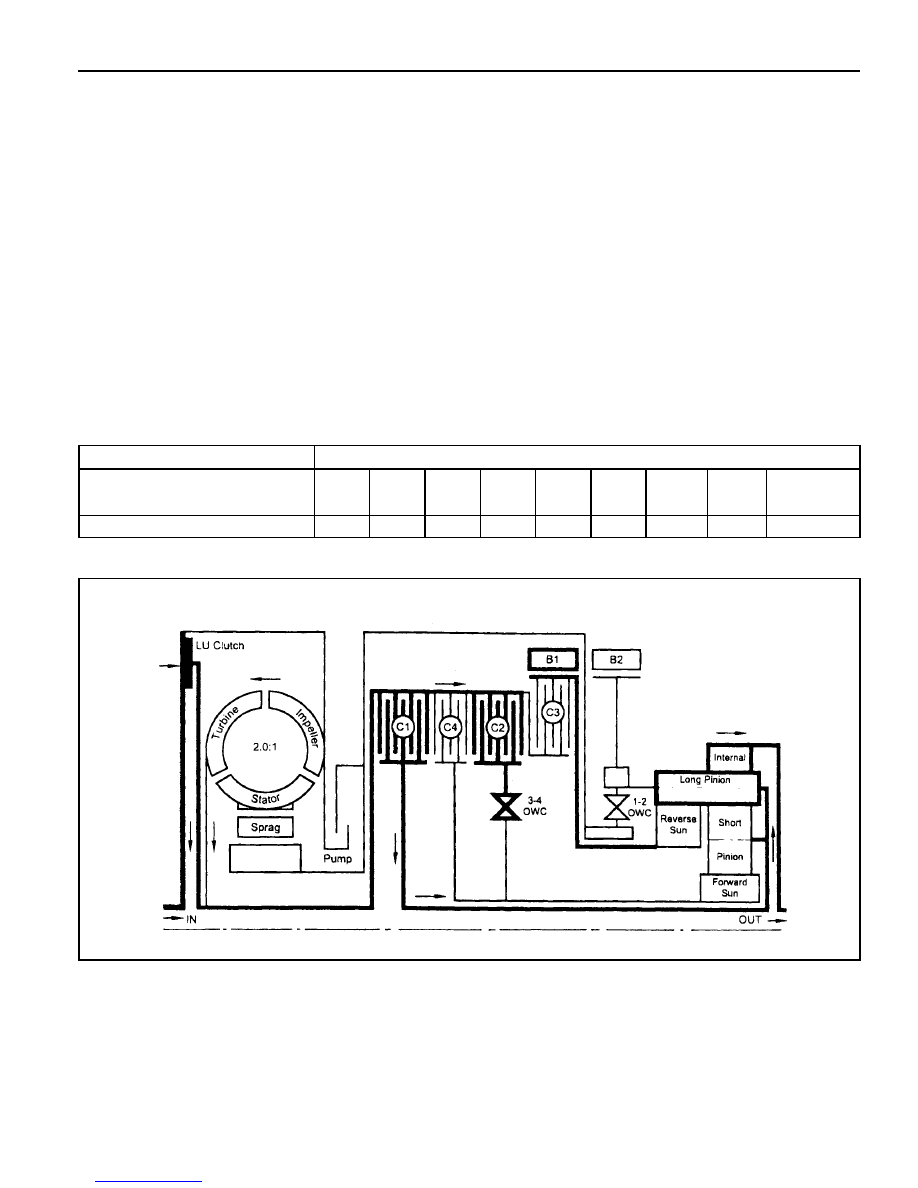Daewoo Korando. Manual - part 254

AUTOMATIC TRANSMISSION 5A-59
POWER FLOW - DRIVE 4 LOCK UP
In Drive 4 Lock Up, transmission drive is the same as for Drive 4 but with the application of the converter lock up clutch
to provide positive no-slip converter drive.
Control
Control for Drive 4 Lock Up is the same as for Drive 4 with the addition of the converter clutch circuit activated by
solenoid S7.
l
When S7 is switched On, S7 feed oil to the converter clutch control valve is switched off and allowed to exhaust
through the S7 solenoid. This allows the valve to move to the clutch engage position.
l
Regulated apply feed oil, delved from Line 500 oil at the converter clutch regulator valve, is directed by the
converter clutch control valve to the engage side of the converter clutch.
l
Converter clutch release oil is exhausted at the converter clutch control valve.
l
Converter feed oil is re-routed by the converter clutch control valve directly to the oil cooler and lubrication
circuit.
Refer to figure 5.9 arid table 5.10.
Table 5.10 - Engaged Elements - Drive 4 Lock Up
Gear State
Drive 4 Lock Up
C1
X
C2
X
C3
-
C4
-
B1
X
B2
-
1-2
OWC
-
3-4
OWC
-
LU
CLUTCH
X
ELEMENTS ENGAGED